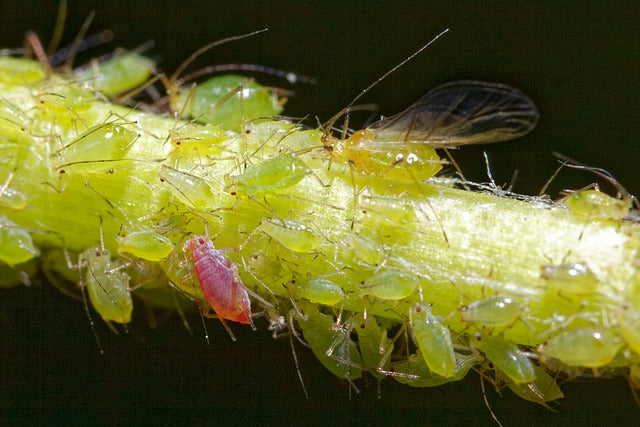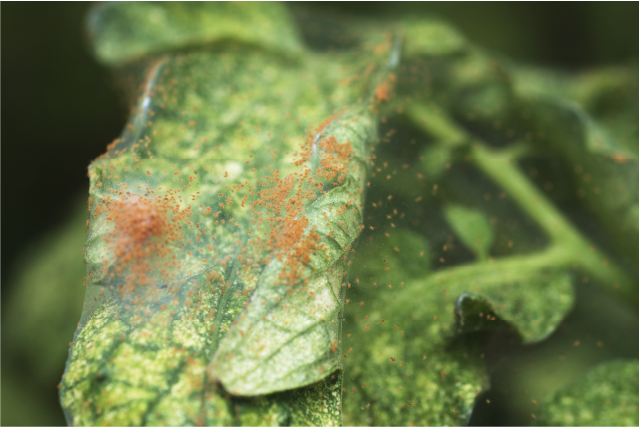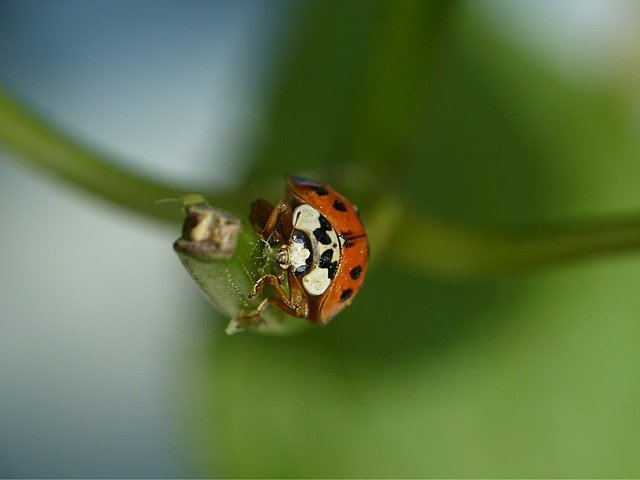What are aphids?
Aphids are common garden pests. They are sap sucking insects, commonly found on the underside of leaves and around the softer tissues of growing points of plants. Aphids are often commonly referred to greenfly and blackfly. There are numerous different species of aphid which are pests for UK gardeners to manage.
Aphids are particularly a problem for two reasons:
- Their sap sucking take nutrition out of the plant they are feeding on. This reduces the health of the plant, its ability to grow and produce crops for you to harvest.
- They have the potential to reproduce very quickly, resulting in them going unnoticed to very high populations in short periods of time.
When aphids are present and feeding they can also cause honeydew, this mould which grows on surfaces which have been covered in waste material released by the aphids as they feed. This black mould can ruin the appearance of plants and contaminated fruit and vegetable being produce by the plant.
How to identify aphids
There are various species of aphid which can cause damage to UK garden plants, these include Peach Potato Aphid (Myzus persicae ver persicae), Cotton Aphid (Aphis gossypii) and Green Peach Aphid (Mysus persicae). Aphids can vary greatly in their colour mostly green but from yellow through to dark brown and black. Being insects they have six legs and adults can appear to have two tubes sticking out from the rear end of their back. They can be winged or not.

What plants attract aphids?
There are a number of different species of aphids and they can attack a wide range of plants. Some aphids are fairly specific to the host plants they will attack and feed on, whereas others are more generalists and can feed on many different common garden and vegetable plot plant types. Many common garden ornamental plants, fruit bushes and vegetable plants are prone to attack from aphids.
What are the symptoms of aphid damage?
Aphids can be seen with the naked eye. The most obvious symptom is identifying the presence of aphids on the under side of leaves and growing points of the plant. Aphids tend to appear in clusters.

Patches of honeydew, with either dark moulds growing or just a shiny surface on the leaves directly underneath where the aphids are living.
Another symptom of aphid being on a plant is noticing ants moving around on the plant leaves. Ants farm aphids for their honeydew and so will regularly move from their nest to the aphids, they will also defend the aphids against anything trying to harm them.
What treatments can be used against aphids?
Because of their small size and mobility it is difficult to prevent aphids infesting a plant, and then difficult to control them once they are established at a high population. To control aphid it is important to check plants regularly and take action as soon as aphids start to appear on the undersides of leaves and growing shoots of the plant.
Predatory insects such as ladybirds (Adalia bipunctata) and lacewings (Chrysopa carnea) will hunt and eat a wide range of aphid species. Parasitic wasps (Aphidius colemani) will hunt aphids and kill them by laying their eggs within the aphid.
Chemical spray treatments against aphids are available, but it is important to remember that chemical insecticides will also harm the beneficial insect species and should not be used if beneficials are going to be used.



